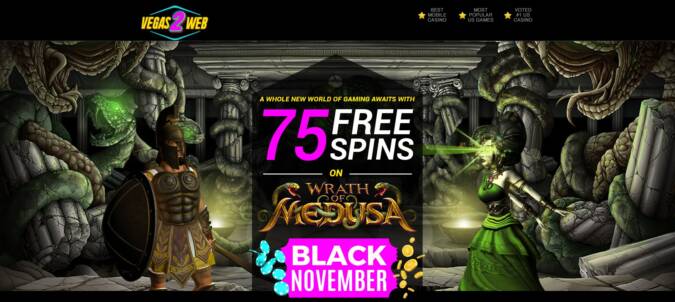Candlestick Charting For Dummies® by Russell Rhoads OverDrive: Free ebooks, audiobooks & movies from your library
The three inside-up candlestick pattern is a bullish reversal pattern that has three candles. Marking the trend change, the third candle is a strong bullish one. The key motivation for traders is the opportunity to make money.
- Differently put, there is a bear trap; the stop losses are triggered and the uptrend gains momentum.
- A hammer pattern in candlestick analysis is a classical single-candle reversal pattern.
- Analyzing the formation and sequence of candlesticks helps traders gauge the momentum and overall trend of the asset.
- While Japanese candlestick patterns can be used across all financial trading markets, their success depends on proper understanding within the context of the specific market and current conditions.
- Japanese candlesticks, including forex candlestick patterns, are a form of charting analysis used by traders to identify potential trading opportunities based on historical price data.
This article will help you understand trader psychology and analyse candlestick chart patterns to trade in financial markets successfully. You can practise your technical analysis skills on the free demo account without registration with LiteFinance. One of the most significant goals of technical analysis is to identify changes in direction of price action. Important to note candlesticks for dummies is that with candlesticks a reversal pattern does not necessarily suggest a complete reversal in trend, but merely a change or pause in direction. While candlestick patterns provide valuable insights into market sentiment, no single pattern guarantees a particular price movement. They are best used together with other technical analysis tools and good old fundamental analysis.
This overview will discuss the characteristics and implications of bullish and bearish candles. Japanese candlesticks, including forex candlestick patterns, are a form of charting analysis used by traders to identify potential trading opportunities based on historical price data. Forex candlestick patterns, are fairly visual compared to other forms of technical analysis and offer information on open, high, low and close prices for the financial instrument you wish to trade. Japanese candlesticks are especially useful in offering insight into the short-term price movements of the markets – a valuable tool for day trading strategies. The evening star doji pattern forms when the market sentiment shifts from bullish to bearish.
Understanding Basic Candlestick Charts
To see one of these candles means that sellers take over at the beginning of the day and push prices lower and lower until the end of the day. Typically, these sellers are just selling to get out, and their price sensitivity is low. Seeing this type of enthusiastic selling should give you confidence that the bears will be in control for a few more days after the long black candle appears, and you can capitalize on that. In the Tradingview free version, you can only save 2 templates, can only have 3 indicators and do not have after-hours / pre-market stock data. Morpher gives you unlimited data, unlimited layouts and unlimited indicator combos on one chart. On top of that, Morpher gives you candlesticks for markets you cannot find anywhere else, like luxury watches, sneakers, NFTs, and many more.
This information aids traders in making more informed trading decisions. The bullish spinning top pattern is formed when the market experiences a significant amount of indecision and volatility during the trading session. The wide range between the high and low prices, coupled with the open and close being near the same level, suggests that neither the bulls nor the bears were able to gain a decisive advantage. This pattern indicates a potential shift in market sentiment from bearish to bullish.
The Most Popular Candlestick Patterns in Crypto
The upper shadows and lower shadows mark the price high and low. Upper shadows and lower shadows show the high and low prices.
Bullish Engulfing Candlestick Pattern: What Is and How to Trade
Most basic context is when trading stocks and buying more if the share price goes down, hence the term “throwing good money after bad” is an obvious problem with this method. Just to give you an idea how the H1 candles looked like on that trade. This again goes to show that although market times are important consideration, what matters most is the trade entry. Well prices did go up a little bit further but since I am trading with bias on my side , it was a very good trade. Do you mean that for an example you are on a sell and then prices stall and start reversing and you add to the lots?
- The upper shadows and lower shadows mark the price high and low.
- Key patterns, such as the Bullish Engulfing Pattern and Bearish Engulfing Pattern, help traders predict potential price reversals.
- Let us explore the situation at the local high of the market trend.
- The above candlestick chart for the Reliance Industries, depicting price movements over a period.
- Candlestick patterns can help understand trader sentiment over trading periods.
Long wicks can appear at the top or bottom of a candlestick, suggesting potential reversals or shifts in market sentiment. The bearish kicker pattern is formed when the market experiences a sudden and significant shift in sentiment from bullish to bearish. Candlestick charts have been used for over 100 years, originating in 18th century Japanese rice trading. The earliest known use was by famed Japanese rice trader Munehisa Homma in the 1700s. They were later brought to the Western world in the early 20th century by Japanese chartist Sokyu Honma. Steve Nison is credited with popularizing their use in Western technical analysis with his 1991 book “Japanese Candlestick Charting Techniques“.
The body of the candlestick shows the price range between the open and close, while the wicks (or shadows) display the highest and lowest prices during the period. While the books above on candlestick patterns often offer valuable insights, they fall short by relying on dated charts and indicators. As you can see, some of these books still have charts that use old black and white candles. The 3-candle rule is a trading strategy that uses candlestick patterns to identify potential entry and exit points. Traders look for a sequence of 3 candles where the first candle moves in one direction, the second candle reverses, and the third candle confirms the reversal.
Based on how the candlesticks are located, you can anticipate the future price movement. As Japanese rice traders discovered centuries ago, traders’ emotions have a major impact on that asset’s movement. Candlesticks help traders to gauge the emotions behind an asset’s price movements, believing that specific patterns help indicate where the asset’s price might be headed.
It is important to be flexible and adjust your preferred trading strategy to the market situation. The most bullish candlestick charts patterns are the hammer, the inverted hammer, the cloud break, three white soldiers. A bearish harami is a small black or red real body completely inside the previous day’s white or green real body. This is not so much a pattern to act on, but it could be one to watch. If the price continues higher afterward, all may still be well with the uptrend, but a down candle following this pattern indicates further weakness.
Not only does it give you a great amount of real-life candlestick trading scenarios, but also the historical context and facts you will not find anywhere else. Here is an example from the book on the morning and evening star context. In this chart, a hammer candlestick is spotted and post which, the stock attained positive momentum.
In the 1700s, a Japanese man named Homma discovered that, while there was a link between price and the supply and demand of rice, the markets were also strongly influenced by the emotions of traders. One of the highlights beyond candlestick analysis is the Day Trading for Dummies course. Designed for complete beginners, this course can help teach you the basics of day trading, technical analysis, and trading psychology. The wicks tell a story about price volatility and the battle between buyers and sellers during that time frame. Long wicks suggest a high level of indecision or conflict between buyers and sellers, while short wicks often mean there was less volatility.

